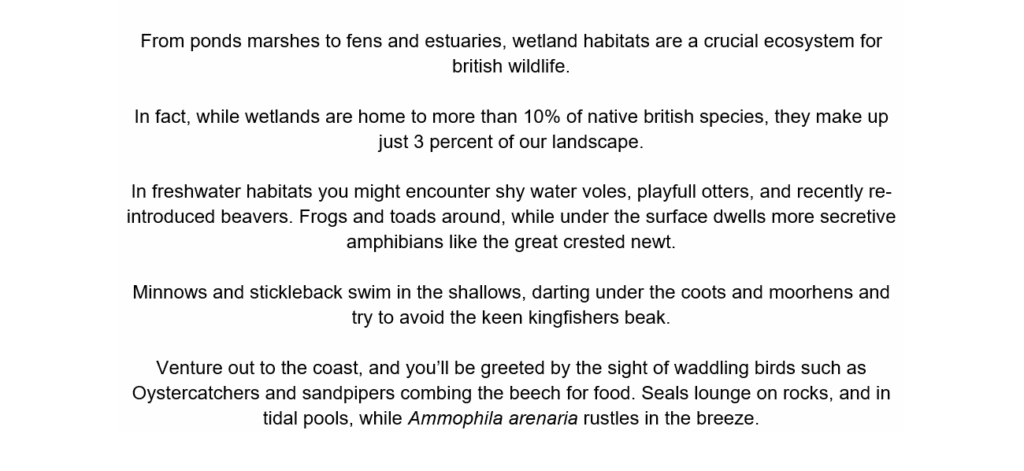
What Is Copy Editing?
Copy editing is an important part of preparing a document for publication. If you’re curious about what copy editing involves and how it differs from other forms of editing, you’re in the right place! In this blog post, we’ll answer your questions and show you how you can start a career as a copy editor.
What Is Copy Editing?
Copy editing involves carefully reviewing a piece of writing – also referred to as “copy” – to correct errors and ensure it meets the client’s requirements and standards before it’s published.
In some cases, a document may only require one round of copy editing, correcting all issues in one go. But a longer, more complex project, such as a novel, is likely to go through several rounds of editing, from big changes on the first draft to finishing touches on the final product – with copy editing in between.
If we think of the editing process as a timeline, copy editing happens toward the end – after developmental and line editing have been finished but before the final proofread.
Developmental editing ➜ Line editing ➜ Copy editing ➜ Proofreading
Although copy editing and proofreading share similarities – and may sometimes be offered as a combined service – they are distinct tasks. Proofreading is typically the final quality check, focusing on minor mechanical issues (such as spelling and punctuation). Copy editing, by contrast, can involve deeper improvements such as clarifying meaning, ensuring consistency, and maintaining an appropriate tone throughout the text.
What Does a Copy Editor Do?
The exact tasks required for copy editing depend on the individual project. Generally speaking, though, a copy edit goes into less depth than a detailed line edit but covers more than just mechanical errors.
A copy editor’s responsibility is to polish a document so that it’s clear, concise, and free from errors. They also ensure that the tone and vocabulary in the text work well to convey the author’s intended message. In practice, this can mean:
- Correcting spelling, grammar, and punctuation mistakes
- Checking that capitalization, italics, and bold text are applied correctly and consistently
- Addressing inconsistencies or errors in word choice
- Ensuring tone is consistent and appropriate for the target audience
- Making sure the document adheres to a style guide (whether that’s an established guide or client-specific requirements)
- Rewording unclear text and trimming unnecessary words
- Suggesting changes to improve structure or readability (e.g., adding headings or lists)
- Ensuring that the author’s voice is maintained throughout the document
Copy editors work on a huge variety of content across a multitude of industries. They work on news articles, manuscripts, essays, blog posts, social media ads, and so much more!
Sometimes, you might work as part of a larger team, completing one stage in the editing process between heavier line editing and the final proofread. In other projects, the copy edit might be part of a full editing service you provide to your own client. And in yet other instances, copy editing may encompass all the intervention a document needs before publication.
Copy Editing Example
To help you understand what copy editing looks like, we’ve put together an example of a copy-edited text.
Here is the original text before any edits have been made:

And here is the copy edited version of the text with corrections shown:

As you can see, some of the changes highlighted are for basic mechanical errors, such as incorrect capitalization and unnecessary commas, while others are related to concision, clarity, or readability. For example, we rearranged the structure of the second paragraph to better highlight how many species wetlands support in such a small area.
And in the final sentence, while Ammophila arenaria (the Latin name for marram grass) is technically correct, it is inconsistent with the common names used for the other species mentioned.
As a copy editor, you would make corrections like these (and many more!). However, when edits involve guesswork or more substantial alterations to the text, you should leave comments for your client to explain your changes. For example, the change from the Latin term to marram grass is a more significant edit and would likely be accompanied by a comment to make sure the writer reviews the new term and makes the final decision.
What Skills Does a Copy Editor Need?
You don’t need a specific degree or formal qualification to become a copy editor. However, there are certain skills you’ll need to do the job well:
- Attention to detail: A copy editor needs to make sure each document they work on leaves their hands as perfect as possible. Even the smallest mistakes need to be caught, as this is what the client expects from the service.
- Excellent writing skills: Writing skills help you be a better editor. As well as writing clear, helpful comments to the author, you need to be able to review a text for clarity and readability and make revisions accordingly.
- Proofreading knowledge: Strong expertise in the rules of English grammar, spelling, and punctuation is important. You should be familiar with some common English dialects and comfortable enough with the language to detect when something is amiss.
- Awareness of different style guides: Applying a consistent style is a core element of the copy editing process. Often, this will mean making sure a document sticks to the rules of a certain style guide. For example, the AP Stylebook, The Chicago Manual of Style, or the Modern Language Association’s MLA Handbook.
- Ability to meet deadlines: A copy editor may have multiple projects lined up at once, sometimes with tight return times, so you need to be able to stay calm under pressure. It’s important to have good time management skills so you can meet all your deadlines, but it also helps to know how to handle it if you miss one.
- Written and verbal communication skills: Whether you’re working as part of a large team or directly with a client, you’ll need to be able to communicate effectively. This means giving clear feedback, providing support, and offering guidance to authors, other editors, publishers, and other stakeholders.
- Computer literacy: While you could print out your documents for editing, most of your work will likely be done on a computer. So you’ll need to know how to operate the most common types of word-processing software: Microsoft Word and Google Docs. Familiarity with other document types, such as PDFs or spreadsheets, is useful but not essential.
- Strong work ethic: Whether you are working from home or in an office, you’ll need to take responsibility for the tasks assigned to you. This means making sure you stay focused so you can get your work done to the best of your ability.
How to Become a Copy Editor
If you’re interested in exploring this varied career path, here are some steps to help you get started:
1. Acquire the Relevant Skills
While you don’t need any previous experience to be a copy editor, an education in journalism, writing, communications, or English can be useful. There are also a lot of excellent online copy editing courses that can teach you the essentials of editing.
2. Read and Write for Practice
Just like anything else, practice makes perfect. You can hone the skills you learned from taking a course by reading as much as possible.
While you’re reading, make mental (or physical) notes about improvements that could be made. You can even seek out the kind of writing you would like to edit and focus on it. By familiarizing yourself with what you hope to edit, you can identify common issues that may arise.
Writing regularly, even if it’s just a personal blog, can help you learn more about the creative process, and that will help you become a better editor.
3. Gain Experience
Copy editors work in many industries, including journalism, publishing, marketing, public relations, and social media. There are also more individual types of work, such as application letters, resumes, student essays, and self-published writing.
If you’re interested in freelancing, you can look for copy editing jobs online or advertise more locally, such as in your local library, college, or community hub. If you would prefer an employed role, research in-house opportunities at newspapers, magazines, and other organizations.
4. Build a Portfolio
When you’re just starting out, creating a portfolio might seem like an impossible task. But if you’re proactive and seek out opportunities, you will have better chances of success. If you’re struggling to get your first assignments, try some of these options:
- Ask friends and family if they have anything that needs to be edited.
- Reach out to potential clients through networking, on social media, or by cold email. You can contact anyone looking for a copy editor or find clients that are representative of the work you want to specialize in.
- Check freelance marketplaces for entry-level opportunities. These might not be the highest paying jobs, but finding work this way can help you quickly build your portfolio.
5. Market Yourself
Whether you’re working freelance or looking for better career opportunities, it’s always wise to know how to sell the valuable services you offer. Having a strong online presence can help you stand out from the competition.
Consider creating your own website to display your portfolio, list your prices, and showcase testimonials from previous clients. Also, make sure to regularly update your profiles on social media (for example, LinkedIn and Instagram) and other professional networking sites.
Becoming An Editor
If the life of a copy editor sounds appealing, then why not take the leap? Our CPD-accredited Becoming An Editor course will teach you all the skills you need to excel in this career. It can be completed at your own pace from the comfort of your own home and includes expert tutor support. And, upon completion, you’ll receive a certificate to show off your new abilities.
Sign up for two free lessons, and start your copy editing journey with Knowadays!
Updated on March 25, 2025





Your email address will not be published.